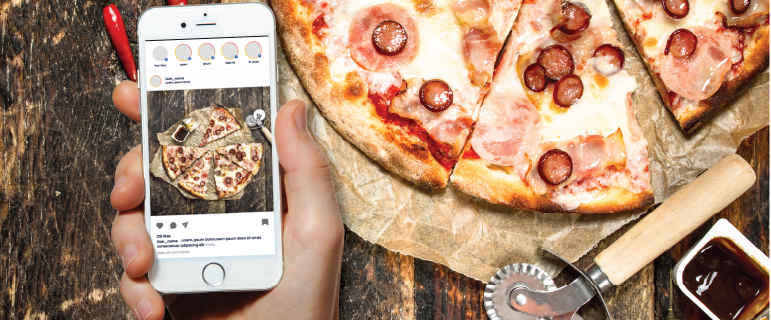
Quick, easy, convenient. Or can’t boil water. Those are viable reasons for using a third-party food delivery app. Or, trying something new from a local restaurant from the comfort of your own home. I’ve done that a few times, although admittedly not as much now that covid restrictions are a thing of the past.
I don’t know why other people use DoorDash, but my guesses are they don’t want to cook, don’t have time, or don’t know how. Whatever the reasons, these were the most popular foods ordered via DoorDash in 2023:
- Fries (DoorDash has delivered 600+ million orders since 2013)
- Chicken Quesadilla
- Mozzarella Sticks
- Garlic Naan
- Spicy Chicken Sandwich
- Pepperoni Pizza
- Chips & Queso
- Traditional Wings
- Cobb Salad
- Fried Rice
I don’t see anything on this list that a convenience store couldn’t pull off—or doesn’t already do.
Convenience stores like Parker’s and Royal Farms have been recognized for their chicken offers in culinary-focused publications like Food & Wine.
Casey’s, the fifth largest pizza chain in the United States, went all in on pepperoni pizza last year with its Pepperoni Pepperoni Pepperoni Pizza featuring three types of pepperonis.
If your stores are known for wings, I need to know who you are—especially if your rub is superior and I can get all flats. No mean to offend but I’m not a big fan of drumettes.
For mozzarella sticks, check out “mozzaratings” on Instagram, where you can find ratings for “movies, albums, and tv shows with Sheetz mozzarella sticks.” According to profile creator @andypeck13, “@sheetz made me a custom shirt...so we’re cool.”
If you sell food, hopefully you’re looking at a social media strategy. Especially TikTok, where you could get lost in this content abyss. The social app says that 2023 “was the year we embraced the culinary delicacies known as girl dinners.”
“Culinary delicacies” is a subjective term. We’re not talking beef Wellington. Girl dinners can be charcuterie-like plates (cheese cubes, grapes, pickles, almonds, olives…) or something that takes minimal time and effort to prepare, like cereal and instant ramen. I could make a fantastic “girl dinner” dinner from a quick spin around an open-air cooler.
For food retailers and restaurants looking to build their brand and bring customers inside the door, social media gives street cred to the theory, “If you build it they will come.”
Here’s an example of one of TikTok’s most popular accounts in 2023: With two locations in the Phoenix area, AZ Taco King has built a strong following on social media that includes more than 92,000 followers on TikTok. Staff at AZ Taco King use TikTok to “highlight their famous dishes, often selling out of food at all of their restaurant locations due to their videos.”
Food trucks have social media to thank for their rise in the early 2000s. Social channels like Twitter gave these businesses a platform to broadcast their location each day, as well as create menu excitement and loyal followers.
Chef Roy Choi, “one of the architects of the modern food truck movement,” started the Kogi food truck in Los Angeles in 2008 “with a humble little Korean short rib taco that met Twitter in the middle of the night in front of a nightclub in Hollywood.” Hit up Google for more on Chef Roy’s career, or watch “The Chef Show” on Netflix.
Food trucks can also be a mobile destination to help drive traffic to a brick-and-mortar location, and vice versa.
Former c-store operator Larry Jackson opened his Bullhead Pit Beef food truck in the Baltimore area in 2014 to expand the foodservice offer at his c-store in Columbia, Maryland. “The only way to get into the arena without remodeling our store, especially since we didn’t know what food to offer, was to start a food truck,” he said in NACS Magazine in 2019.
It’s not uncommon to find delicious food at a local c-store or gas station. It’s also not uncommon to find that these stores have a loyal social following.
Some of these locations, particularly smaller operators with limited marketing spend, skip having a website altogether and rely on Facebook, Instagram or TikTok. Which is great—as long as content is updated with a regular cadence, including hours of operation.
I’ll end with this advice: If you have great food, people want to see it. As the saying goes, we eat with our eyes. For content creation, no need to break the budget for fancy equipment. Smartphones have exceptional cameras that can take rich, sharp and colorful social pics and videos. Combine that with some editing software on your phone or computer, and you’ve just made yourself a producer, director, cinematographer and editor.
Food is culture. It can also be a company’s story and most of all, food is fun. Your customers want to know your story. Social media can help with that.